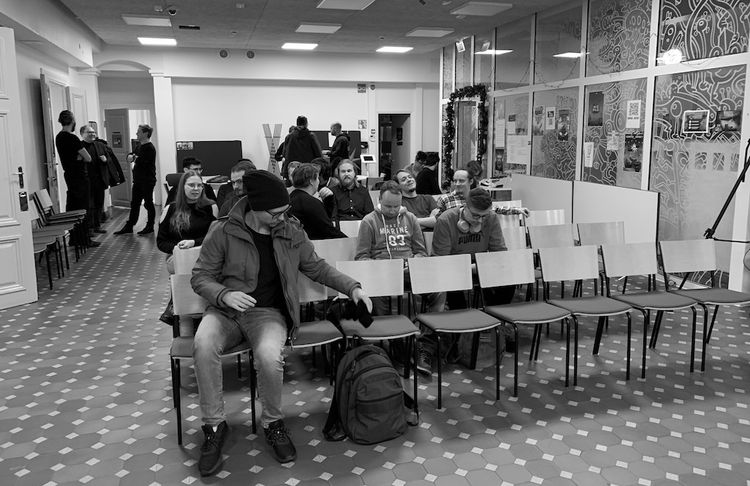How to survive to 2025

In early January, I wrote my predictions for 2023. There I pointed out that startup fundraising will be challenging, or even impossible, this year.
In general, tech startups are much less likely to raise before they can show traction. I believe that because of the tech crash of 2022, gaming’s first-money investors will become more demanding from teams to show initial traction with their gaming startups. Initial traction should consist of some user-related KPIs.At a minimum, the numbers should be on user engagement with the game, how much they are playing it, returning to it, and enjoying it. Investors will prefer some indication of revenue for that second round of financing, the $5m to $10m raise. Those companies must cut costs immediately in Q1/2023 and go for revenue as soon as possible.
— 2023 predictions for gaming startups
A week ago, I came across this interesting Twitter thread, which is spot on to what I believe will happen to gaming fundraising in 2023 and 2024.
January 31st 2023
|
Here are the highlights from the thread:
First, context: “great” startups will always get funded, albeit not on 2021-style terms. Many “good” startups will endure down or flat rounds. Many merely “ok” and pre-product-market-fit startups will die – at a greater rate than anything we’ve seen since 2008.
Many startups raised ~2 years of cash in 2021 and 2022. They cut burn in H2 2022 to extend that 🛫. But no matter what, they’ll need to raise again (or sell, or become a 🧟) in late 2023 and 2024.4 in 5 very early-stage companies have fewer than 12 months of runway, according to a survey of 450 founders last fall by January Ventures.
All of this points to a FLOOD of startups coming to market to raise capital beginning in H2 2023 and continuing through 2024. More will seek capital than will get funded. What you hear now is the quiet before the storm.
Late 2023 into 2024 will be worse than the Great Financial Crisis of 2008-9 for venture-backed startups. GFC was centered on Wall St. Private startup valuations, round sizes & burn didn’t go bananas in the years leading up to the GFC.
This time is different. 2021, for startups, was more toxic than the GFC. The hangover will start later this year and will be more severe than that from the GFC.
You’ll see a flood of startups raising 💰. Gun-shy VCs w/ alligator arms will slow their pace, take less risk and fund the startups with the most concrete traction. Timid LPs will hide under desks.
Meanwhile, reluctant insiders will debate doing pro rata in bridge rounds. Many rounds will involve structure. Layoffs, firesales and shutdowns will ensue.But we're not going back to 15x+ fwd revenue multiples even for excellent companies in the public markets. (We're currently at ~4.5x for most companies and 8x-12x for the elite.) Private mkt multiples may not match the public markets but they will come a lot closer!“Oh, but Tom, what about all the talk of dry powder that will make valuations go back up?” FALSE for the following reasons:
A. Funds won't deploy their capital in 1 yr (unlike 2021) but rather in 3+ yrs, dividing that powder by 3 or 4! Yikes!
B. Many funds have already been partially or mostly invested; their next funds might be smaller and take 2x as long to raise, b/c of LP constraints.
C. 2001-2004, there was also "a lot of dry powder", but valuations still plummeted and words like “structure”, “ratchet” and “pay-to-play” were commonplace. Look them up if you need to.
Note that I'm not as bearish on the situation: gaming is growing substantially even post-pandemic, and VCs will want to keep backing companies throughout 2023-2024. It's just getting more demanding, and if you thought you could raise pre-numbers, think again.
Think survival
As I’m writing this piece in February 2023, to get to 2025 without additional funding means that the existing cash and possible revenues should provide a 24-month runway.
Cut costs
One of the most straightforward ways to extend the runway is to cut costs. Cost-cutting could mean anything from getting rid of the office to cutting 20% to 80% of your staff. Usually, in a startup, most of the costs come from team salaries. Layoffs could mean going back to five people in a room or their home offices.
I’ve done many layoffs in my previous startups, and the experience is always heartbreaking. Here are a few things I’ve learned about effective startup layoffs:
Be transparent about the financial situation of the company. But don’t start when things are getting tough or there’s a dead end. Start from day-0. Talk to the entire team about the company cash position, monthly burn, and runway with your team, preferably updating the whole company weekly or biweekly.
It can be as short as an email or Slack message to the entire team, sharing the numbers and also a paragraph or two from the CEO and founders on what this means.
“Hey, team. Here’s a quick update on the company vitals: we are 12 people FTE, with cash in the bank at $920,100. Our current monthly burn is roughly $72K, and with no revenue and additional funding, we estimate that we will have cash until February 2024. Let me share my thoughts on the situation: text, text, text….”
Why does transparency matter in layoffs? It builds trust. Most entrepreneurs I’ve talked to recently about cutting costs is that they worry about their best people leaving the minute that layoffs get talked about. As long as the management keeps everybody up-to-date on company vitals, the trust is there, and people would have left ages ago if a startup wasn’t for them. Sharing vitals is startup life, and people who stick around will embrace this.
Once you cut, cut deep. You might be contemplating laying off four people out of 20. But that only gives you three months of runway. You will still run out of cash in 13 months. But if you go to 8 people, meaning that you cut 12 people, you might have closer to 20 months of runway. You can get back to work with eight people and many more months to prove the company and figure something out. To survive.
Another added benefit to cutting once is that people who are left behind will feel safe that the extended runway of almost two years will mean that new layoffs aren’t necessary. Multiple rounds of layoffs would hamper people’s trust in the leadership, and they could start expecting third and fourth layoffs.
After the layoffs, get back to work. It would be best if you had a plan ready on what you will do in the next 12 months to show that things are going to get better and you believe there is a bright future for the company. Continue sharing transparently what the numbers look like and where things are headed so that trust in your team stays high.
Let me interrupt a bit here. You might be asking why I wouldn’t suggest raising a bridge round from existing investors. Let me get to that in point C. If you’ve not cut costs, let’s get to a change of plan.
If you want to do an extreme for the leftover people: everyone takes a 20% pay cut. But everyone gets 20% more stock options and another 20% in 12 months.
Change your plan to launch early
It can be hard to realize that there is a new normal. You might have been planning to ship your game in 18 months, but that’s not good in this situation where money will run out before you get there. How can you get to having something out in 10 months, max?
In 2014, my company Next Games, signed a deal with AMC Networks to create a free-to-play mobile game out of the hit TV show, The Walking Dead. We started planning the game in the summer of 2014 and hired people. We first struggled with coming up with the right concept. Once we finally had the idea, we had less than 12 months to launch the game globally. What did we accomplish a successful global launch in 12 months?
First, we looked at our commercial targets. In 12 months, the 2015 season of Walking Dead would air, and the season’s premier would be an immense boost for any Walking Dead property going out simultaneously. A big launch with lots of downloads was one target, but it wasn’t the most important. We wanted those players to stay, meaning our primary KPI became DAU. We wanted lots of DAU, but how do we have a product out in 12 months that can capture the audience and keep it?
First, we shipped a game with very rough code. A tech engineer’s nightmare, but it was fast to get out of the door. Second, we leaned on social features like a weekly event you would play with your guild, which had awesome rewards. People came back because they had ties with their guildmates, so we had long-term retention and sustainable DAU. Third, it was a marathon with lots of sprints. To get features out, the team did long hours. But then they had a week where things were less about long hours and more about planning and efficiency on what needed to go in next.
The Walking Dead: No Man’s Land came out at the same time as the show’s sixth season premiered at the end of August 2015. Our game became number one in free downloads in the US App Store. Since we got in those social features, we could sustain DAU, and in 2016, the game was making millions.
Bridge round
Okay, you did the cuts, great. Then raise a bridge round, right now, that will add at least 12 months of runway. Talk to your existing investors and see if they would be up for putting more money into the company. But you have to have A and B done: costs cut, and the team is on board with a new plan.
Many founders have recently asked me how I’d calculate a valuation for a bridge round without KPIs. It depends significantly on existing money raised, previous round valuations, etc. Often, the valuation won’t be higher than your last raise.
My message is not to worry so much about valuation. The key is to survive 12 months longer. You can always re-hire people and raise a round at a higher valuation when the market comes back. Take the dilution, embrace going back to five people in a room, and survive.
Final words
I, for one, love the tightening of belts and stressing the ecosystem. On a recent All-In podcast, one of the co-hosts, investor, and entrepreneur Chamath Palihapitiya shared a graph on how all the great tech companies since the 1950s have all started during times of bear market or recession.
I believe that resilient companies will survive until 2025. That group of companies will have the big companies of the late-2020s.
(Image by Satya Tiwari from Pixabay)






